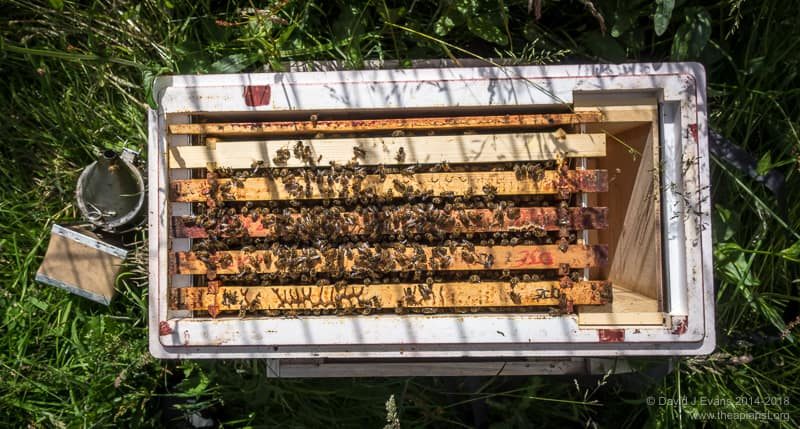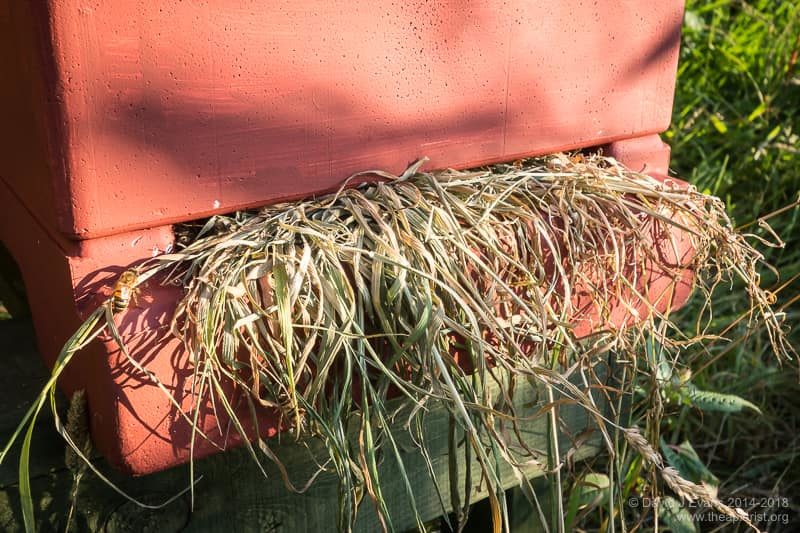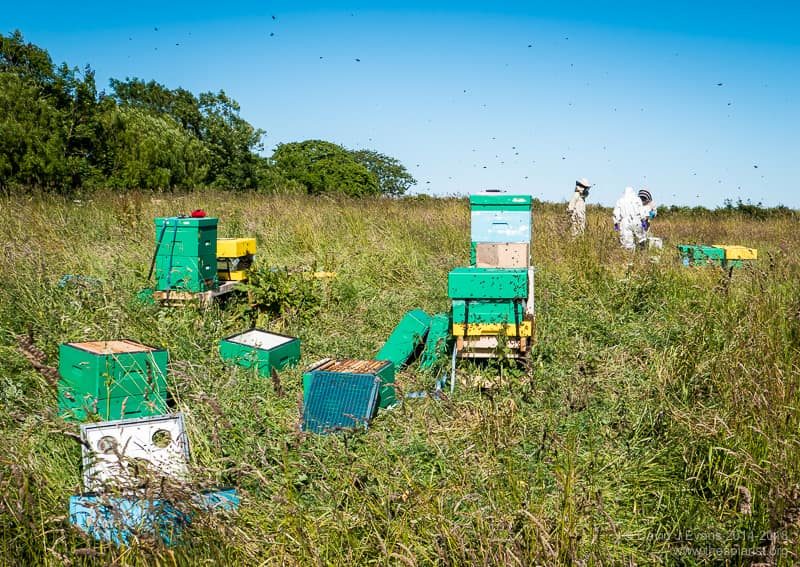Taking stock
It’s the middle of the season {{1}}. Hopefully, the timely application of swarm control measures such as a vertical split or Pagden’s artificial swarm, have maintained strong colonies and created additional colonies headed by new queens.
July is the month I review my stocks with the goal of:
- replacing ageing queens that are unproductive
- removing bad tempered colonies (though most have already been dealt with)
- preparing strong colonies to exploit late season nectar flows
- making up nucleus colonies for overwintering, either as backups or for sale
Of course, this type of taking stock should be a continuous process through the season, but it’s easier to start it now for the winter, rather than leaving it to the shorter days, more variable weather and less dependable nectar flows of late summer.
Two into one does go
Often the intention is to simply replace an old queen with a new queen. In a vertical split this is simplicity itself. Remove the queen that is unwanted and the split board, replacing the latter with a sheet of newspaper. Make one or two very small holes in the newspaper with the point of a hive tool and leave the colony to it.
Over the course of the next few days the workers will chew through the newspaper, unite amicably and set about building up the stores for winter.
A week or so after uniting I rearrange the frames, usually making space for the queen to lay in the top box with the brood below. If the colonies being united are smaller it’s sometimes possible to remove one box altogether.
There’s discussion online about quick ways to unite colonies by spraying both with air freshener. The smell – which is usually pretty awful {{2}} – masks the colony scent and so the colony does not fight. I’ve not done this so can’t recommend it (or, for that matter, criticise it).
Since I’ll be returning a week later to check the boxes and rearrange frames I’m happy to stick with newspaper uniting which rarely fails. Air freshener is also one less thing to carry in the bee bag.
Nucs for pleasure and profit
Five frame nucleus (nuc) colonies overwinter well if prepared properly {{3}}. They are really useful in the early spring to make up for any winter losses, to replace colonies with failing queens {{4}} or to sell.
Overwintered nucs are often appreciably more expensive than those imported later in the season, or in the glut of bees that follows the swarming season.
The queen has proved herself and the nuc is available when demand is highest … at the very beginning of the season.
Whilst I would – and have – argued that it might be better to start beekeeping later in the season working alongside your mentor, there are strong economic imperatives to overwinter nucs for sale.
Splits and nucs
With a successful split (or Pagden) you now have two queens, one strong colony and one building up fast. The latter – with the new queen – can be used to prepare a nuc for overwintering, with the remaining bees and brood strengthening the original colony for the late season nectar flow {{5}}.
It’s easy to prepare a nuc colony to take away to a distant apiary – the new queen, a frame of stores, one or two of emerging brood and a mixed frame of eggs and brood, all with the adhering bees, together with a couple more frames of bees shaken in over the top. Make up to five frames with foundation, seal them up and ship ’em off to your out apiary.
If you don’t have access to an out apiary you should ensure that the majority of the older workers are omitted when preparing the nuc, and you should add in additional young bees to help the new queen get established.
It’s also worth stuffing the nuc entrance with dead grass for a few days to enforce the ‘new environment’ on the bees.
You exclude the old foragers by giving each frame placed in the nuc a gentle shake before putting it into the box. The old bees fly off, the young ones cling on. Do the same with the ~3-4 additional frames of bees added on top before re-siting the the nuc in the apiary.
Nucs may need feeding, particularly if there’s a dearth of nectar or bad weather. Keep an eye on them. By excluding the old foragers you can feed them without the risk of robbing. However, it’s wise not to feed them for the best part of a week after making up the nuc to allow any carried-over stragglers to return. This is why it’s important to include a full frame of stores from the outset.
Variations
There’s still ample time in the season to rear new queens, so all sorts of other combinations of requeening/uniting and/or splits are still possible. For example, I’ve recently used a particular queen to requeen a colony and will split the box she came from into 2-3 nucs, all of which should build up well for overwintering.
By splitting the box after the new queen cells are raised I ensure they were produced by a well-balanced population of bees, with ample stores under ideal conditions. I think this is better than divvying up the frames from the recently queenless box and hoping to achieve the strong and balanced population in all the nucs. Inevitably some are stronger than others … or, more significantly in terms of queen cell production, weaker.
And in between all of this amateur dabbling I’ve been working with our friends and collaborators in Aberdeen on methods of Varroa control to minimise the levels of deformed wing virus (DWV) as well as starting our studies on chronic bee paralysis virus (CBPV) …
… oh yes, and moving into a new house ? {{6}}
{{1}}: At least it is for me in the Northern hemisphere.
{{2}}: Sea breeze, Orchard blossom, Old socks, Spring waterfall etc. … OK, I’ll admit it, one of those I invented.
{{3}}: My choice is to use poly nucs which I’ve discussed extensively previously.
{{4}}: Technically also probably a winter loss in my book.
{{5}}: Simply by uniting the now queenless remnants of the hive with the original box.
{{6}}: Which explains the delay in this post.




Join the discussion ...